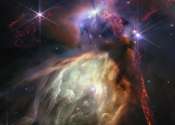Exoplanet caught on the move (w/ Video)
(PhysOrg.com) -- Only 12 million years old, or less than three-thousandths of the age of the Sun, Beta Pictoris is 75% more massive than our parent star. It is located about 60 light-years away towards the constellation of ...









